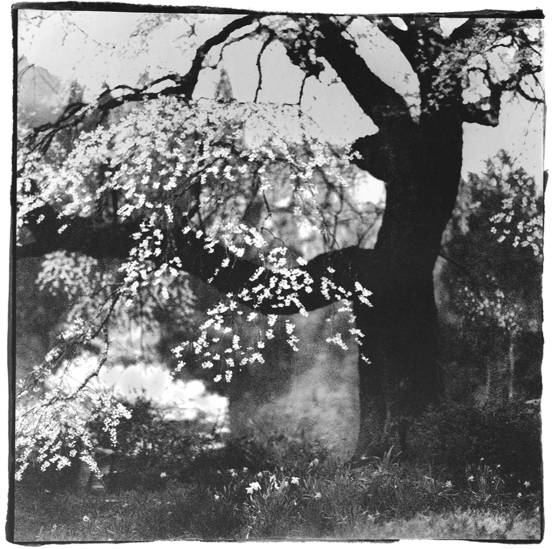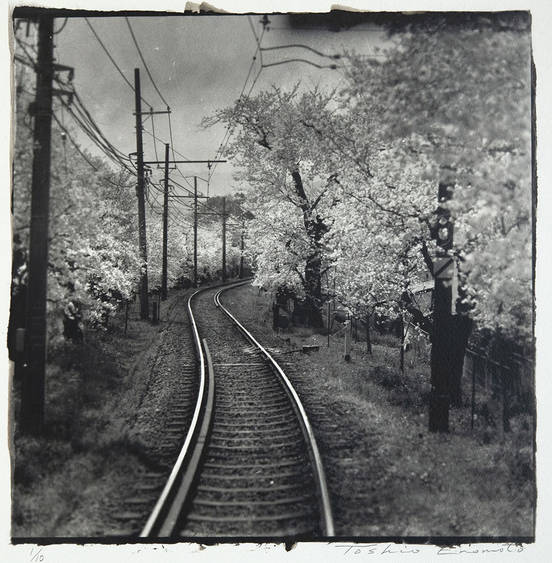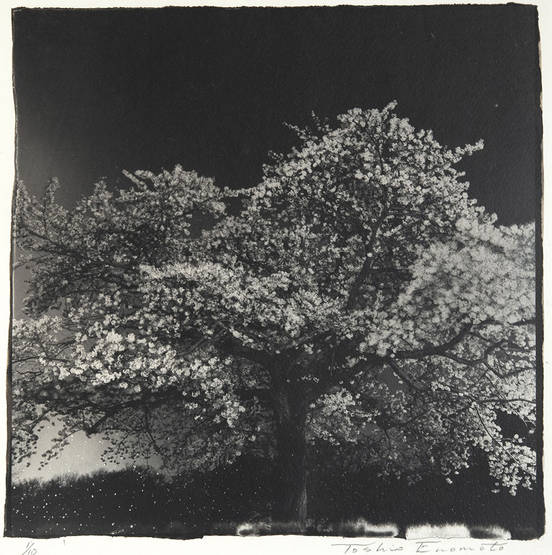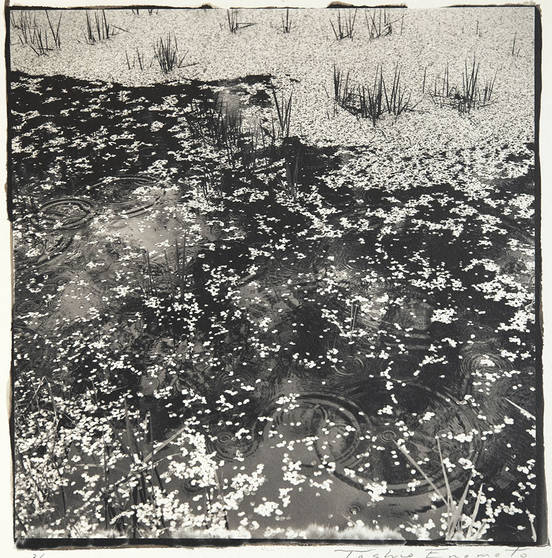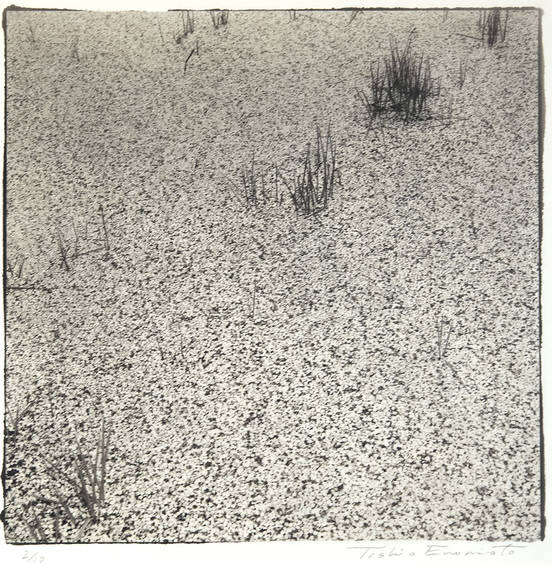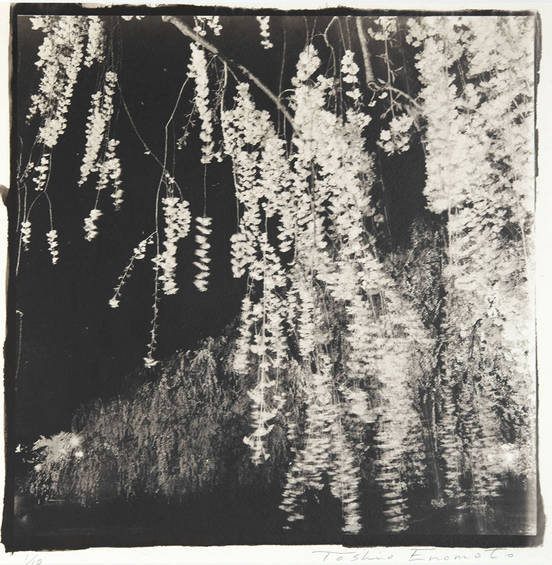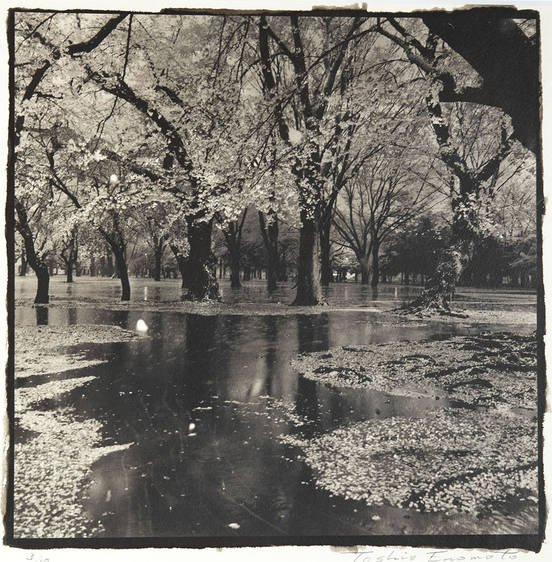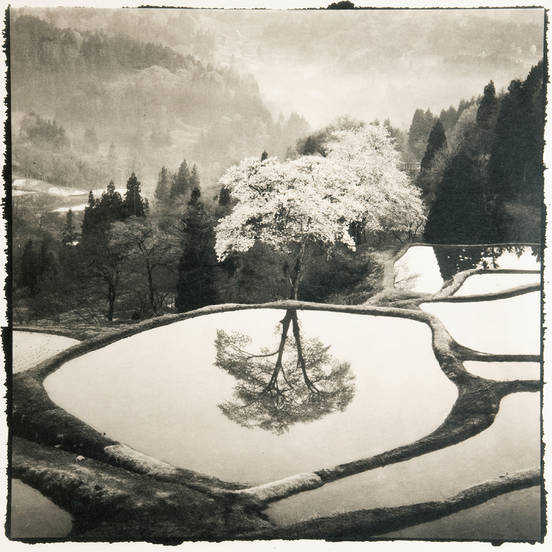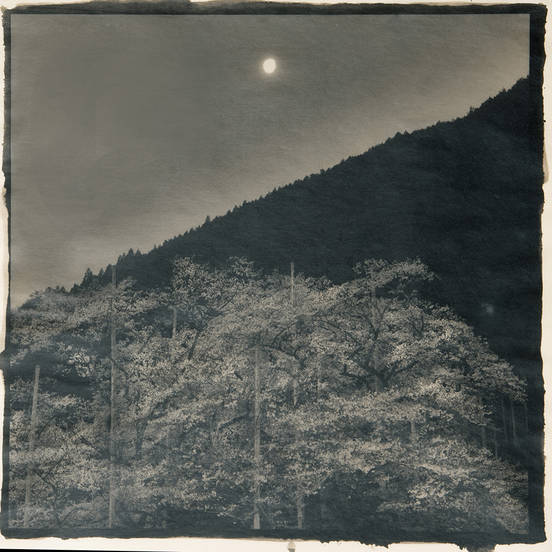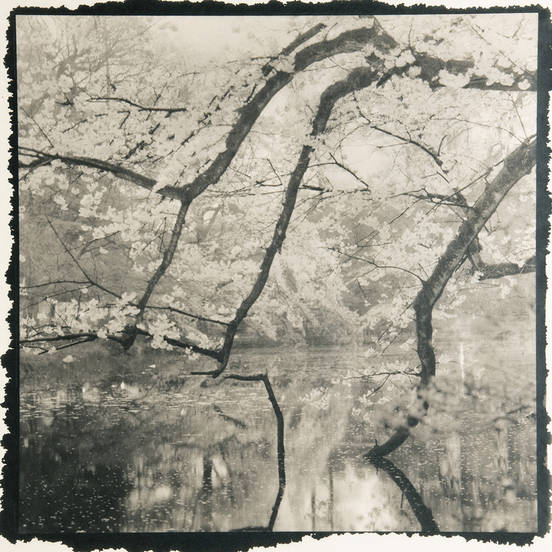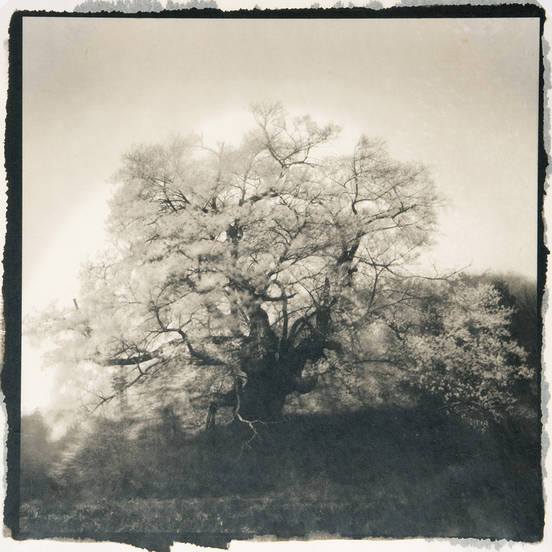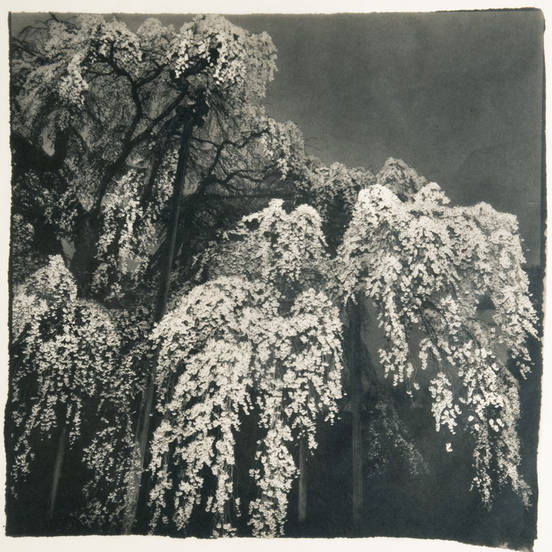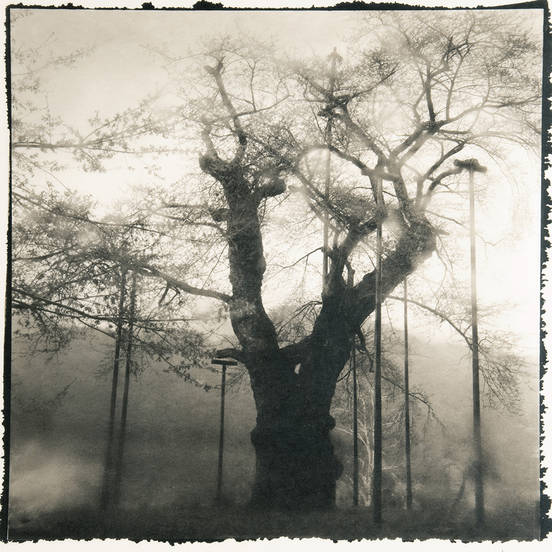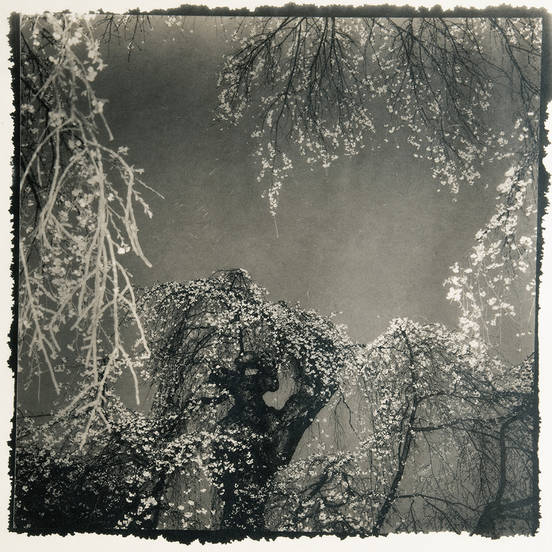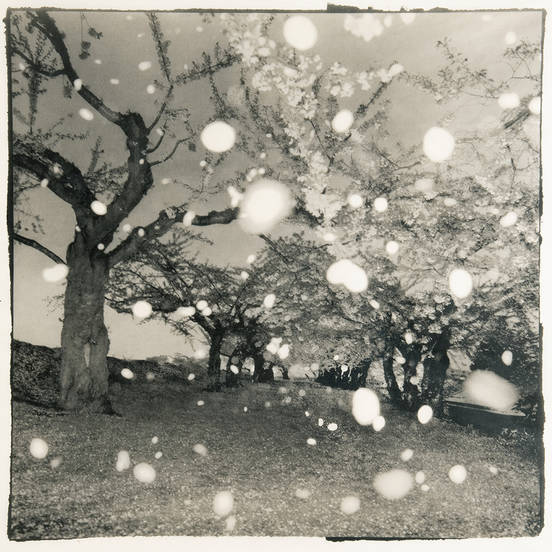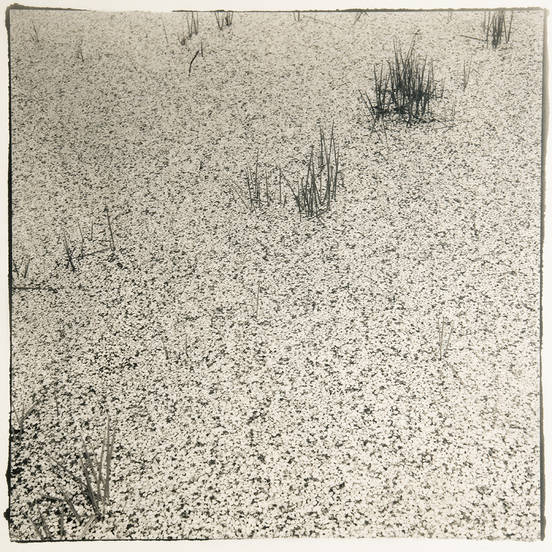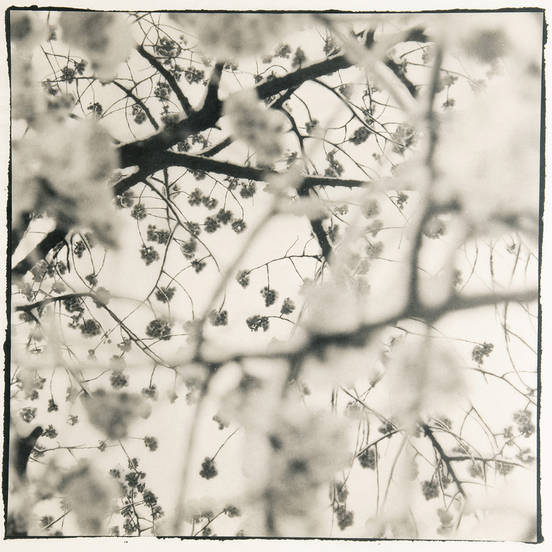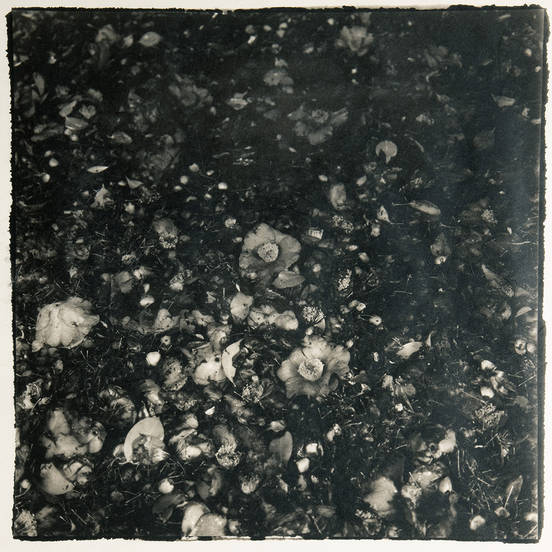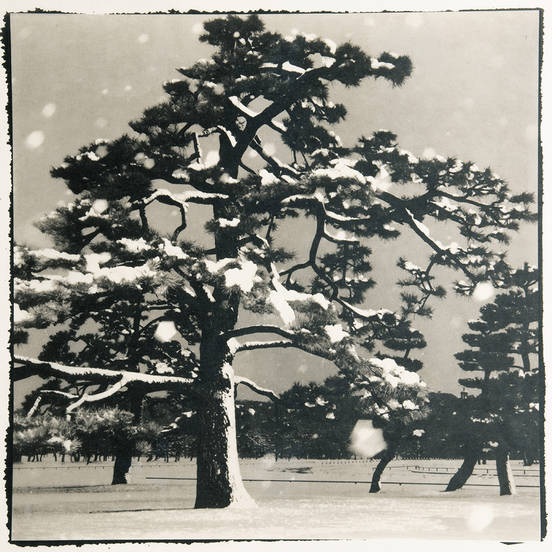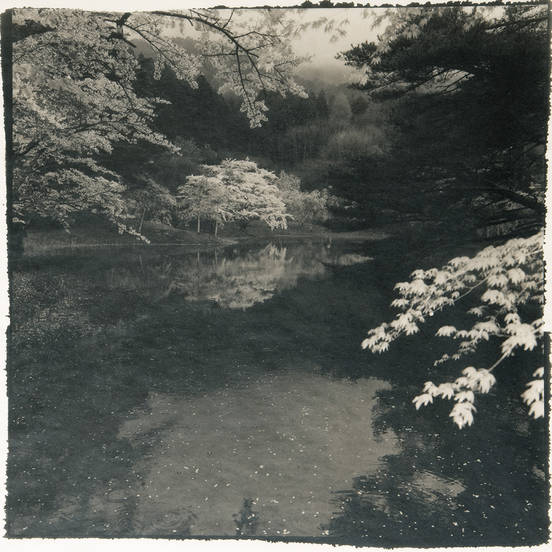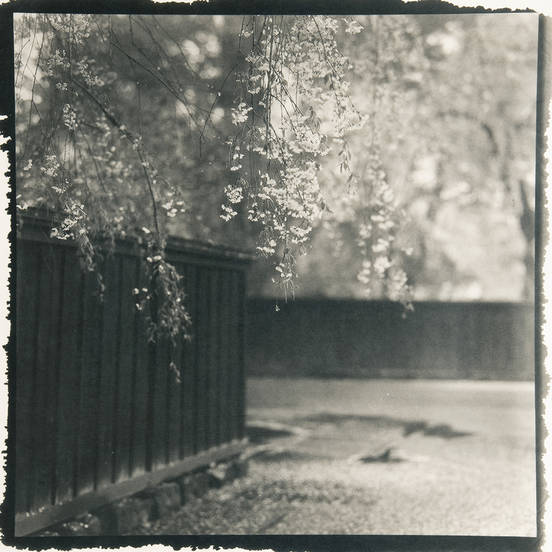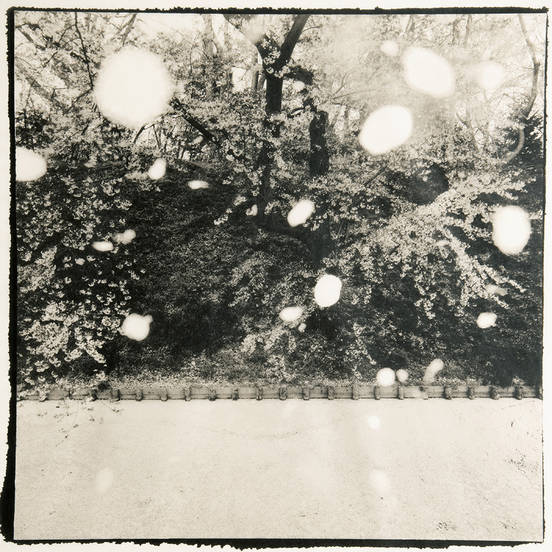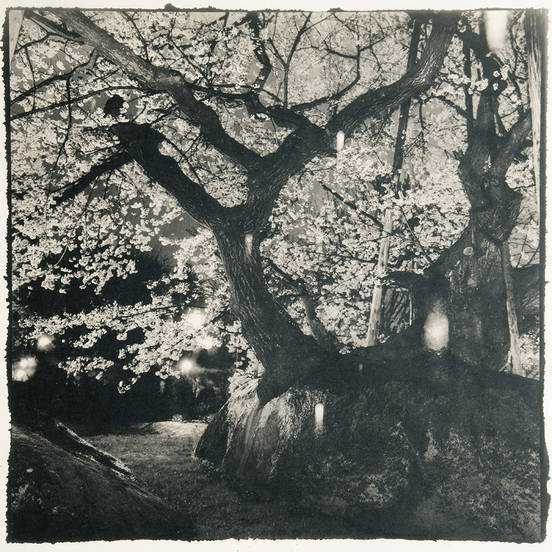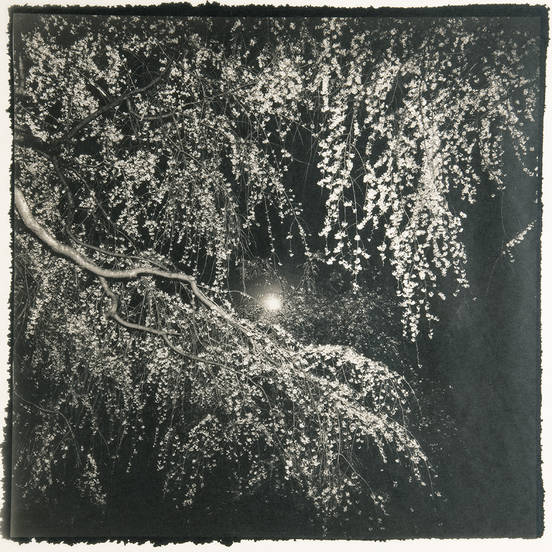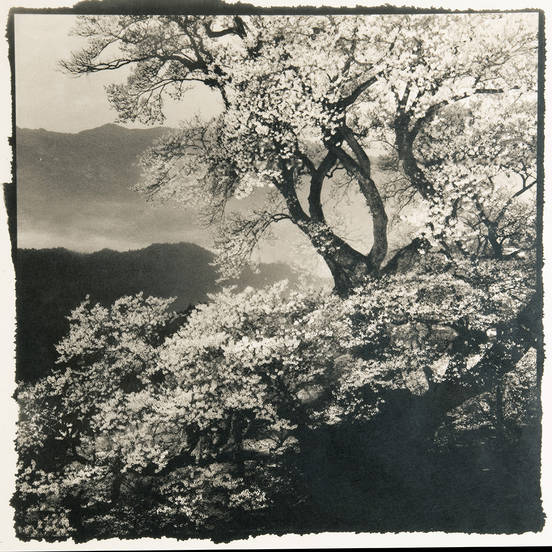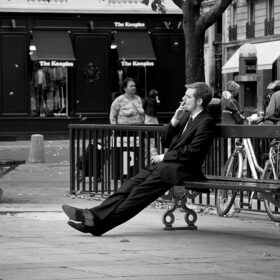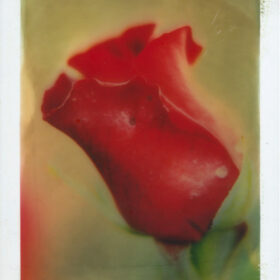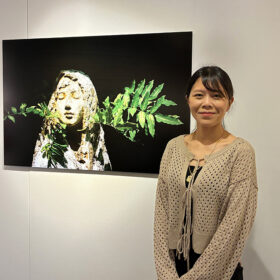榎本 敏雄
Enomoto Toshio

日本写真家協会会員
1947年東京生まれ。
1970年から2年間、日本デザインセンター入社
1972年4月より7ヶ月シルクロードを自動車で踏破。
20代後半フリーで毎日新聞出版局、平凡社「太陽」などでグラフジャーナリズム写真に従事。
30代、コマーシャル写真やファッション写真などを中心に仕事。
大学時代からシリアス写真を継続して撮影、現在に至る。
■写真展
1972年 第1回個展『日々』(ニコンサロン)
1974年 第2回個展『遠い東』(ニコンサロン)
1983年 第3回個展『太夫』(京都クラフトセンター)
2001年 第4回個展『開花』(北鎌倉ワイツギャラリー)
2008年 第5回個展『薄明の記憶』(gallery bauhaus)
2009年 第6回個展『アルルカン』(ニコンサロン)
2010年 オランダ海外個展『かぎろひ』(Galerie Wouter van Leeuwen, Amsterdam)
2010年 Summer Loves展(Huis Marseille, Museum for photography, Amsterdam)
2012年 「ドイツと日本の写真家によるさくら展」(MICHEKO GALERIE, Munchen)
2012年 ドイツ海外個展[かぎろひ](MICHEKO GALERIE, Munchen)
2015年 オランダ海外個展[SAKURA](Galerie Wouter van Leeuwen, Amsterdam)
2016年 『プラチナプリント展』(鎌倉ドゥローイングギャラリー)
2017年 個展[SAKURA](MICHEKO GALERIE, Munchen)
2021年 『薄明の櫻 プラチナプリント展』(京都写真美術館)
■写真集
『Far East』/トータルプランニング出版局 1993
『かぎろひ(櫻.京.太夫)』/平凡社 2009
『CIRCUS』/用美社 2024
■パーマネントコレクション
ハウス・マルセイユ写真美術館(Huis Marseille, Museum for photography, Amsterdam)
■受賞歴
朝日広告賞グランプリ、電通広告賞、日経新聞広告賞、講談社雑誌広告賞
JR東日本ポスターグランプリなどを受賞。
1947年東京生まれ。
1970年から2年間、日本デザインセンター入社
1972年4月より7ヶ月シルクロードを自動車で踏破。
20代後半フリーで毎日新聞出版局、平凡社「太陽」などでグラフジャーナリズム写真に従事。
30代、コマーシャル写真やファッション写真などを中心に仕事。
大学時代からシリアス写真を継続して撮影、現在に至る。
■写真展
1972年 第1回個展『日々』(ニコンサロン)
1974年 第2回個展『遠い東』(ニコンサロン)
1983年 第3回個展『太夫』(京都クラフトセンター)
2001年 第4回個展『開花』(北鎌倉ワイツギャラリー)
2008年 第5回個展『薄明の記憶』(gallery bauhaus)
2009年 第6回個展『アルルカン』(ニコンサロン)
2010年 オランダ海外個展『かぎろひ』(Galerie Wouter van Leeuwen, Amsterdam)
2010年 Summer Loves展(Huis Marseille, Museum for photography, Amsterdam)
2012年 「ドイツと日本の写真家によるさくら展」(MICHEKO GALERIE, Munchen)
2012年 ドイツ海外個展[かぎろひ](MICHEKO GALERIE, Munchen)
2015年 オランダ海外個展[SAKURA](Galerie Wouter van Leeuwen, Amsterdam)
2016年 『プラチナプリント展』(鎌倉ドゥローイングギャラリー)
2017年 個展[SAKURA](MICHEKO GALERIE, Munchen)
2021年 『薄明の櫻 プラチナプリント展』(京都写真美術館)
■写真集
『Far East』/トータルプランニング出版局 1993
『かぎろひ(櫻.京.太夫)』/平凡社 2009
『CIRCUS』/用美社 2024
■パーマネントコレクション
ハウス・マルセイユ写真美術館(Huis Marseille, Museum for photography, Amsterdam)
■受賞歴
朝日広告賞グランプリ、電通広告賞、日経新聞広告賞、講談社雑誌広告賞
JR東日本ポスターグランプリなどを受賞。
Toshio Enomoto is no stranger to the collectors and visitors of Micheko gallery. His solo exhibition „Kagirohi” in April 2012 attracted a record number of visitors and gained the artist a new fan base in Germany and beyond.
Since then the artist has not been inactive. Enomoto continued to photograph his passion, the cherry blossom season of Japan in all its variety of colours and shapes, he brought a long term photo project to a successful end and last but not least he began a journey into the past of photography. He re-discovered the elaborate and time consuming process of creating handmade platinum prints for himself.
Black ship cherry tree. Achi Village. nagano
A tree in full bloom under the moon, Kyoto Imperial Palace
Kanhi-zakura on a snowy day, Ebara Shrine, Shinagawa, TokyoNO1
Kanhi-zakura on a snowy day, Ebara Shrine, Shinagawa, Tokyo
Large wild cherry tree at Nitta Fukushima
Platinum prints differ from other black-and-white printing methods due to their age stability, which is estimated that it would last for several hundred years. The Platinum prints do not lose their intensity and will not be damaged by light. Each Platinum print is unique, even if several hand prints are made from the same negative. Each print has its own individual subtleties. The tonality of grey gradations is much richer in details than in a conventional gelatine silver print. The process was developed in the 19th century and was for a long time the favourite development process of the photographers of the time. Since platinum was very expensive and not easy to procure, as well as the process itself was time-consuming, it was soon abandoned and photographers turned to other, cheaper and faster photo processing procedures. In the 1970s the process was rediscovered by famous photographers such as Horst P. Horst, Irving Penn, and later Herb Ritts.
The digitisation of photography over the past twenty years has made the appreciation of permanent, hand-made photo prints in museum quality, especially among younger artists, who are often self thought by studying old notes and text books on platinum printing.
Micheko has previously exhibited platinum prints by Japanese fine art photographers but we are especially proud of having the latest works by Toshio Enomoto, since we were directly involved in the selection of the images and had been in close contact with the artist over a period of two years to make this exhibition happen.
The main theme of the exhibition is Sakura, the time of the Japanese cherry blossom, with all the emotions that this time of the year triggers in the Japanese people.
Our western trained eye interprets the cherry blossom as a sign of the new birth, the awakening of nature after a long winter. We are pleased with the blossoming of the cherry trees and other flora and we hope for a long, warm and sunny spring. The Japanese, however, celebrate the transience of life, the beauty of the white to delicate pink petals with “Hanami”, the act of watching cherry blossom petals fall. New beginning against transience, two visions of the same spectacle of nature.
Toshio Enomoto works on his Sakura series every year from the end of February till the end of May. He travels the Japanese main islands from Okinawa to high up in the north to Hokkaido. During the rest of the year, he researches the most important Sakura trees in the country, the most unusual sites and everything that is so special in a sakura tree that it is worth traveling far for the one, very special photograph. Enomoto speaks of an emotional state that decides whether a picture succeeds or not. It is not only the “decisive moment” that counts, but the emotions of the photographer when photographing a Sakura scenery. If she is too excited about the subject, the environment, or the prevailing light, the photograph will not succeed. There is only one pressing the shutter release of the medium format camera that Enomoto has been using now for many years. Only in the darkroom, back in his studio in Tokyo, does the artist learn whether he managed to keep his emotions under control in order to capture the scene in all its details and all its beauty. Otherwise, he will go back the following year to try his luck again. In the hope of being able to photograph the perfect sakura motif in the perfect state of emotions.
Since then the artist has not been inactive. Enomoto continued to photograph his passion, the cherry blossom season of Japan in all its variety of colours and shapes, he brought a long term photo project to a successful end and last but not least he began a journey into the past of photography. He re-discovered the elaborate and time consuming process of creating handmade platinum prints for himself.
Black ship cherry tree. Achi Village. nagano
A tree in full bloom under the moon, Kyoto Imperial Palace
Kanhi-zakura on a snowy day, Ebara Shrine, Shinagawa, TokyoNO1
Kanhi-zakura on a snowy day, Ebara Shrine, Shinagawa, Tokyo
Large wild cherry tree at Nitta Fukushima
Platinum prints differ from other black-and-white printing methods due to their age stability, which is estimated that it would last for several hundred years. The Platinum prints do not lose their intensity and will not be damaged by light. Each Platinum print is unique, even if several hand prints are made from the same negative. Each print has its own individual subtleties. The tonality of grey gradations is much richer in details than in a conventional gelatine silver print. The process was developed in the 19th century and was for a long time the favourite development process of the photographers of the time. Since platinum was very expensive and not easy to procure, as well as the process itself was time-consuming, it was soon abandoned and photographers turned to other, cheaper and faster photo processing procedures. In the 1970s the process was rediscovered by famous photographers such as Horst P. Horst, Irving Penn, and later Herb Ritts.
The digitisation of photography over the past twenty years has made the appreciation of permanent, hand-made photo prints in museum quality, especially among younger artists, who are often self thought by studying old notes and text books on platinum printing.
Micheko has previously exhibited platinum prints by Japanese fine art photographers but we are especially proud of having the latest works by Toshio Enomoto, since we were directly involved in the selection of the images and had been in close contact with the artist over a period of two years to make this exhibition happen.
The main theme of the exhibition is Sakura, the time of the Japanese cherry blossom, with all the emotions that this time of the year triggers in the Japanese people.
Our western trained eye interprets the cherry blossom as a sign of the new birth, the awakening of nature after a long winter. We are pleased with the blossoming of the cherry trees and other flora and we hope for a long, warm and sunny spring. The Japanese, however, celebrate the transience of life, the beauty of the white to delicate pink petals with “Hanami”, the act of watching cherry blossom petals fall. New beginning against transience, two visions of the same spectacle of nature.
Toshio Enomoto works on his Sakura series every year from the end of February till the end of May. He travels the Japanese main islands from Okinawa to high up in the north to Hokkaido. During the rest of the year, he researches the most important Sakura trees in the country, the most unusual sites and everything that is so special in a sakura tree that it is worth traveling far for the one, very special photograph. Enomoto speaks of an emotional state that decides whether a picture succeeds or not. It is not only the “decisive moment” that counts, but the emotions of the photographer when photographing a Sakura scenery. If she is too excited about the subject, the environment, or the prevailing light, the photograph will not succeed. There is only one pressing the shutter release of the medium format camera that Enomoto has been using now for many years. Only in the darkroom, back in his studio in Tokyo, does the artist learn whether he managed to keep his emotions under control in order to capture the scene in all its details and all its beauty. Otherwise, he will go back the following year to try his luck again. In the hope of being able to photograph the perfect sakura motif in the perfect state of emotions.

